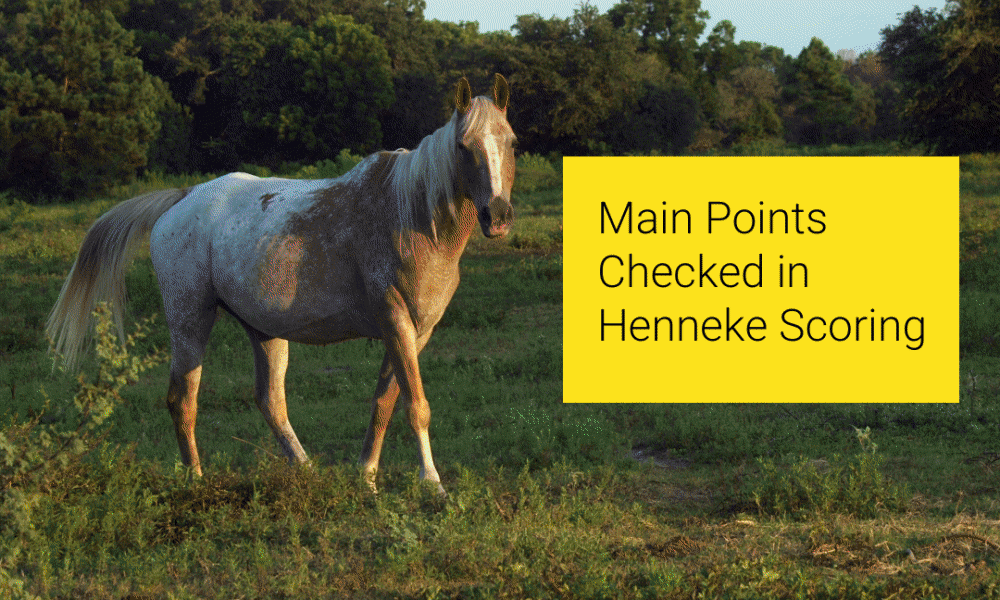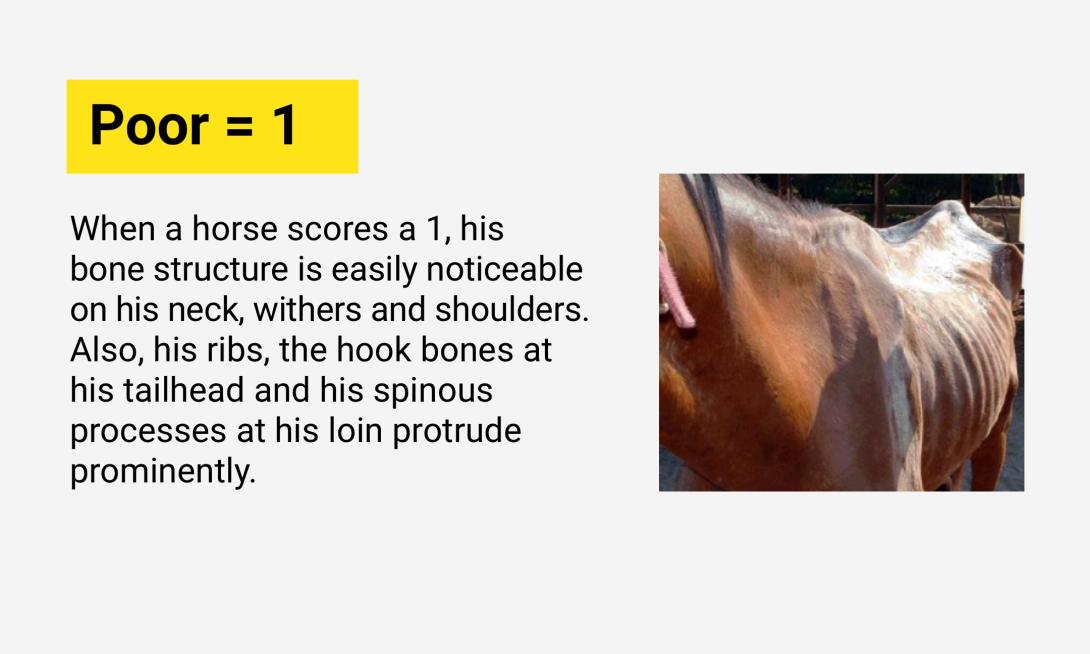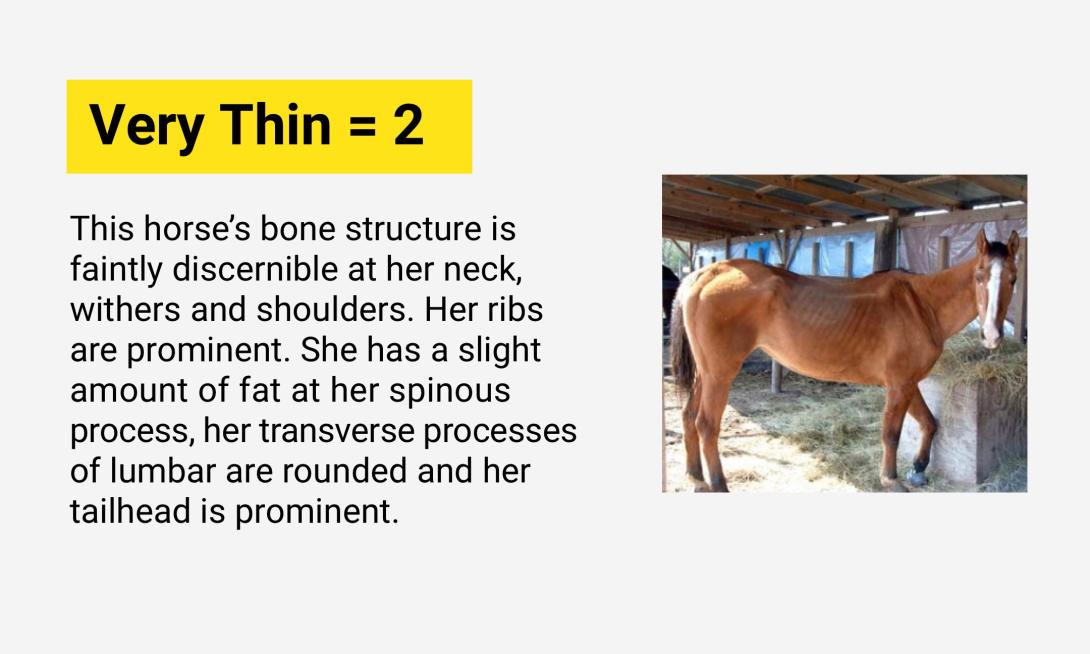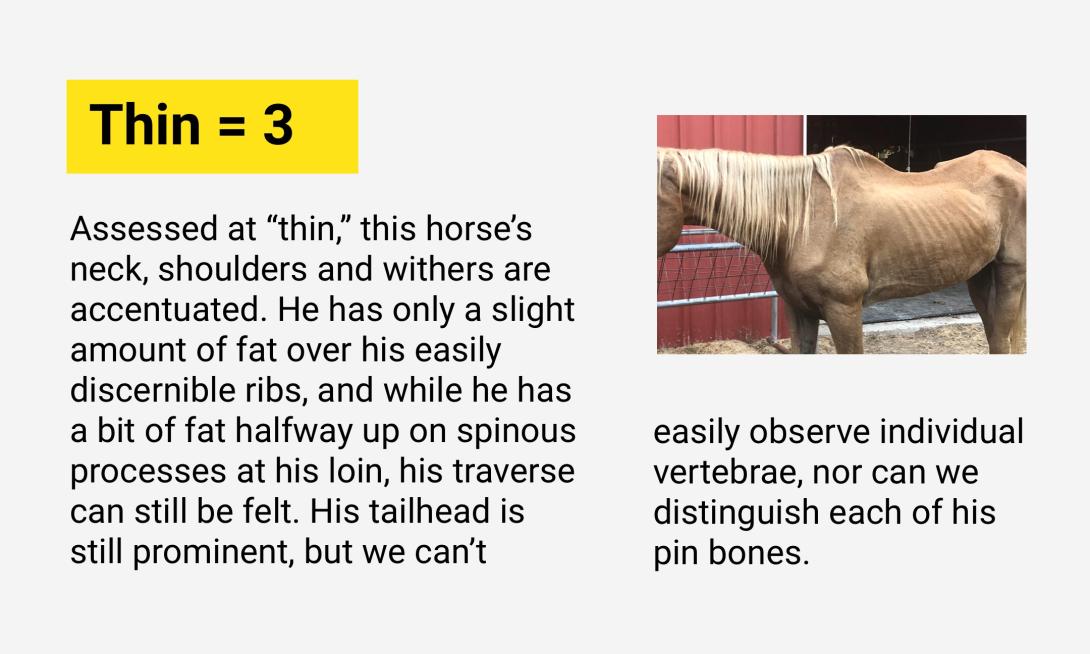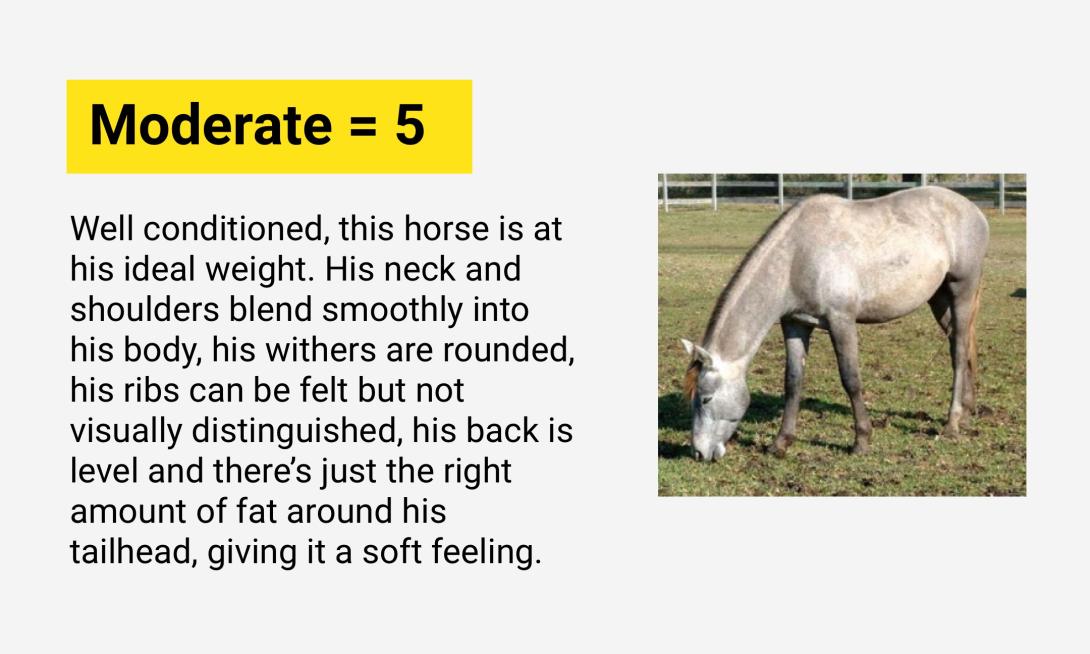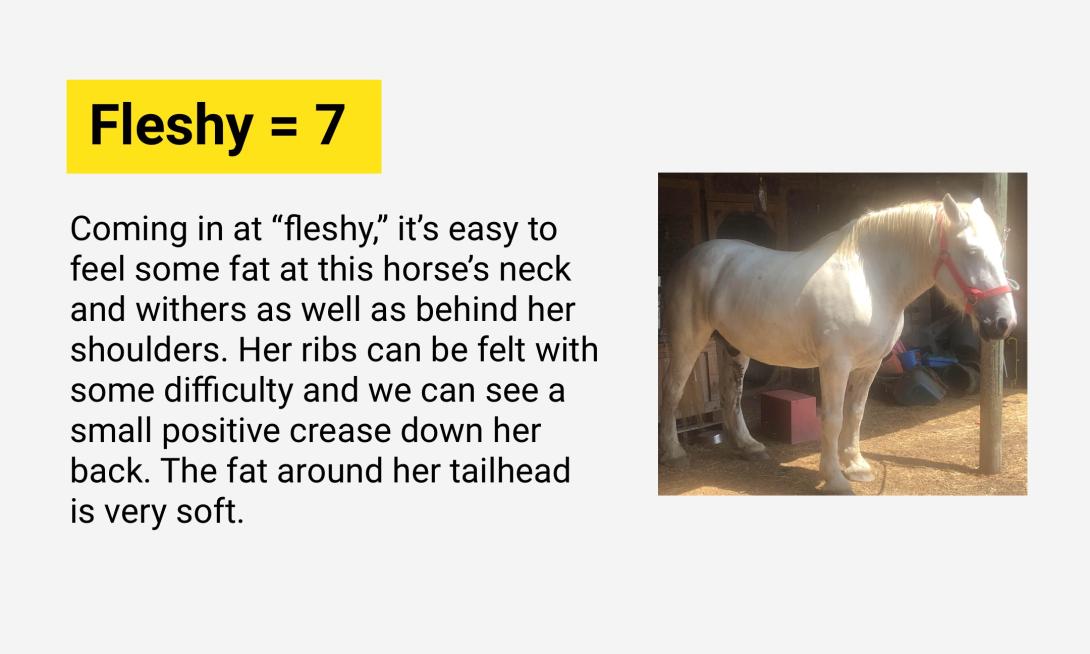Scoring a Horse’s Body Condition is the First Step Toward Healing
Most rescue operations and law enforcement rely on the Henneke Body Condition Scoring System to evaluate the health of a horse. Using a scale of 1 (skin and bones) to 9 (grossly overweight) this scientific system assesses fat and muscle and is reliable regardless of breed, body type, sex, or age. Critically, courts of law admit the findings of the Henneke Body Condition Score as evidence of equine abuse.
Developed by Don Henneke during his graduate study at Texas A&M University, the system is based on visual appraisal and palpable fat at the six points most responsive to changes in body fat. Standardized scoring eliminates the need for terms like “skinny,” “thin,” “emaciated” and “fat,” which have different meanings to different people.
This system checks six parts of a horse: the neck, withers, shoulders, ribs, loin and tailhead. Each part must be touched with enough pressure to provide an accurate idea of the horses’ condition. By pressing a hand to a horse’s side and gently massaging the tissue, the amount of fat covering his ribs becomes more apparent. Likewise, when checking the withers, a full exploration of the area, squeezing as if it were firm clay, indicates the amount of fat present. It’s possible to be firm and gentle at the same time, and both types of touch are necessary to properly score the horse.
After pressing each part of the horse to assess body fat, each area is assigned a numerical score to correspond with the horse’s condition. When examining a horse with a long coat, a firm assessment with the hands is required. A long haircoat can hide the protrusion of bones in all but the most extreme cases.
The scores are then totaled and divided by 6 to find the horse’s rating on the Henneke Body Scoring Conditioning Chart.
Conformational differences between breeds or individual horses may make certain criteria difficult to apply to every animal. In these instances, the areas affected by conformation should be discounted, but not ignored when determining the overall condition score.
Conformation also changes in pregnant mares as they approach parturition (birth). Since the weight of the conceptus tends to pull the skin and musculature tighter over the back and ribs, emphasis is placed upon the fat deposits behind the shoulder, around the tailhead and along the neck and withers.
The chart rates the horses on a scale of one to nine. A score of one is considered poor or emaciated with no body fat. A nine is extremely fat or obese. Horse veterinarians consider a body score of four to seven as acceptable. A five is ideal.
Since starvation is the most common reason for a horse to be seized, most of Habitat for Horses rescues arrive with a score of one to three. They need immediate medical attention and a careful refeeding program to begin their rehabilitation. Because we carefully follow the Henneke system, the score we give a horse at intake can be used as evidence in a case of equine abuse.

